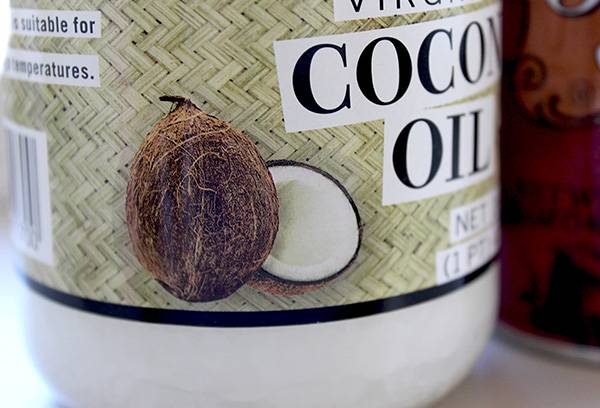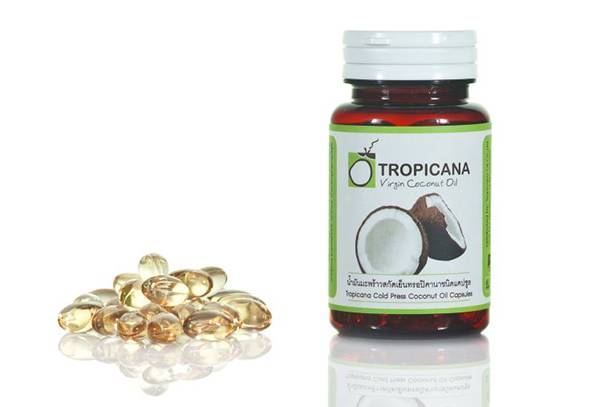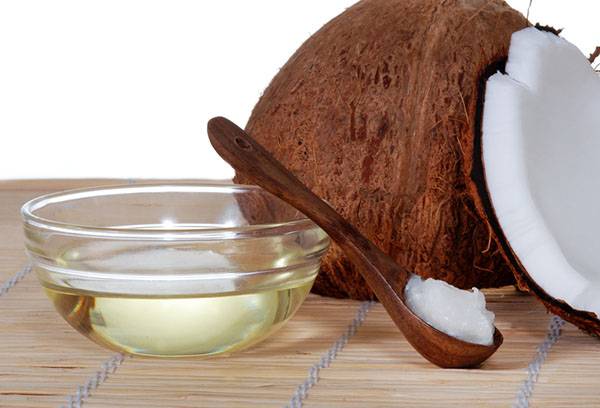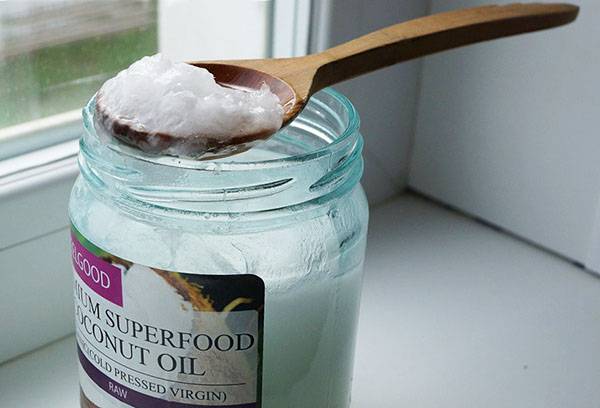How to properly store edible and cosmetic coconut oil?
The packaging of the bottles or ampoules does not indicate exactly how to store coconut oil. The shelf life of the product depends on the temperature, humidity and lighting of the room.

Cooking method
In Asian countries, where coconuts cost mere pennies, oil production is carried out by small family factories and large industries. Many people mistakenly confuse it with the clear liquid found inside the nut. Others think that it is the liquid squeezed out of the pulp shavings. However, this is nothing more than milk from which butter is extracted.
Butter can be made in two ways:
- boiling;
- cold pressed.
In small factories where there is no special equipment, milk is boiled. As a result, the liquid coagulates, turning into a thick brown mass with a clear golden liquid. It is the liquid that is the valuable oil that you can extract at home.
However, a more useful product is obtained by cold pressing, because it cannot be heat treated and retains all trace elements and vitamins. When buying medicinal or cosmetic oil, pay attention to the packaging. It should indicate that the product is made by cold pressing. It lasts longer and contains more useful components.
Storage recommendations
The packaging of a professional skin or hair care product contains storage recommendations.If for some reason they are not listed, it is important to find out for yourself how to properly store coconut oil. A 100% ecological product without impurities or flavors can be stored for two years. Coconut oil is not difficult to store, does not oxidize and does not become bitter.
Advice
Screw the lid of the jar or bottle tightly to prevent air from getting inside.
For storage, choose a glass bottle with a stopper. It will protect the product as much as possible from oxygen. Screw caps on jars and bottles allow air to pass through, which causes the coconut fat to oxidize.
Coconut oil hardens at temperatures below 24 degrees. If you open the jar and find that the product has thickened and the clear golden color has changed to milky white, don't worry. Useful components do not disappear from this.
Air temperature and humidity
Coconut fat can be stored in either solid or liquid form. This does not affect its quality in any way. The consistency of the product depends solely on temperature conditions. Up to 24 degrees it remains thick, and after 25 a slow melting process begins. The optimal storage temperature is from 4 to 20 degrees. The storage can be a kitchen cabinet, a pantry shelf, or a refrigerator.
If the butter has been stored in the refrigerator, be sure to melt it before using. It is advisable to do this in a water bath or by placing a cold bottle on a warm radiator. Only in liquid form is fat absorbed into the skin or hair. Indoor air humidity should not exceed 60 percent.
The container in which the product is stored must be dark. Direct sunlight inevitably leads to deterioration in quality.Jars should not be stored on a dressing table or shelf; hide them on the refrigerator door or inside a cabinet. You should not worry about the contents of the capsules; they are protected by a dense shell.
Package
Many people buy coconut oil in bulk. This method of sales is practiced in Asian countries, where the product is sold in every store. After purchase, it must be poured into a container suitable for storage.
- The container should be made of dark glass (plastic jars are not suitable).
- The lid should close tightly (ideally, there should be a plug on the thread instead of a lid).
- Make sure that the bottle into which you pour the oil is clean and dry.
It is advisable to follow these rules for storing an environmentally friendly product obtained by cold pressing. Follow the ingredients on the package. If the product contains preservatives, the shelf life cannot be extended by transferring it to another container.
Capsules and ampoules
When buying coconut fat in capsules or ampoules, you risk purchasing a fake or low-quality product. To ensure quality, break one capsule. The leaked liquid should be transparent and have a golden hue. If the color is bright yellow, it means the product is not suitable for further use.
Do not throw away the cardboard packaging, it protects the contents from sunlight. Ampoules should not be stored in the refrigerator. This can only be done at the end of the shelf life (three months before). Packs of capsules can be stored in a medicine cabinet or in a dark place (closets). After opening, the ampoule must be used; it can be stored for no more than 12 hours.
Storing a Home Product
Making homemade butter is quite easy.From one medium-sized coconut you will get approximately 30 ml of finished product. The nut pulp should be grated on a fine grater and squeezed through cheesecloth. The white liquid is coconut milk, which is sometimes confused with the water inside the nut. The milk is boiled over low heat until it begins to darken. The mass is divided into lumps and a transparent brownish liquid. After cooling, the contents of the saucepan are squeezed through gauze to obtain oil.
Pour the squeezed oily liquid into darkened glass bottles. It is advisable that they be plugged with plugs that do not allow air to pass through. The use of plastic containers is strictly prohibited. Homemade oil should be used within 2 weeks after preparation.
Food storage
The food product must be stored in the refrigerator. Only hot-pressed oil is used for food (you can prepare it yourself using the recipe described above).
Despite the long shelf life and unpretentious storage conditions, do not stock up on a huge number of vials overnight. The fresher the product, the healthier it is.






A friend brought me coconut oil from Thailand in an ordinary plastic transparent bottle. It turns out it's not worth storing it like that. I'll look for a dark glass bottle.